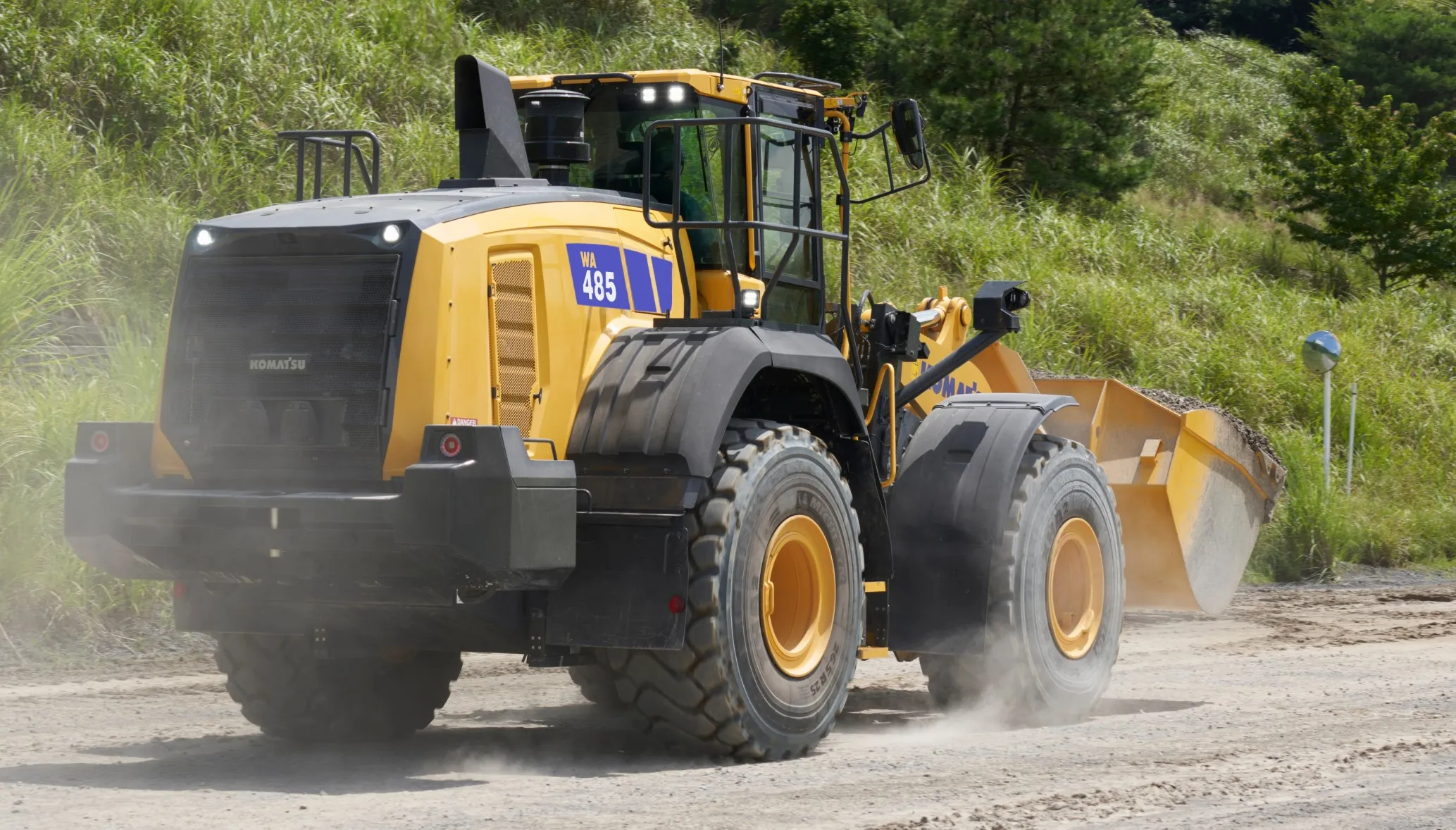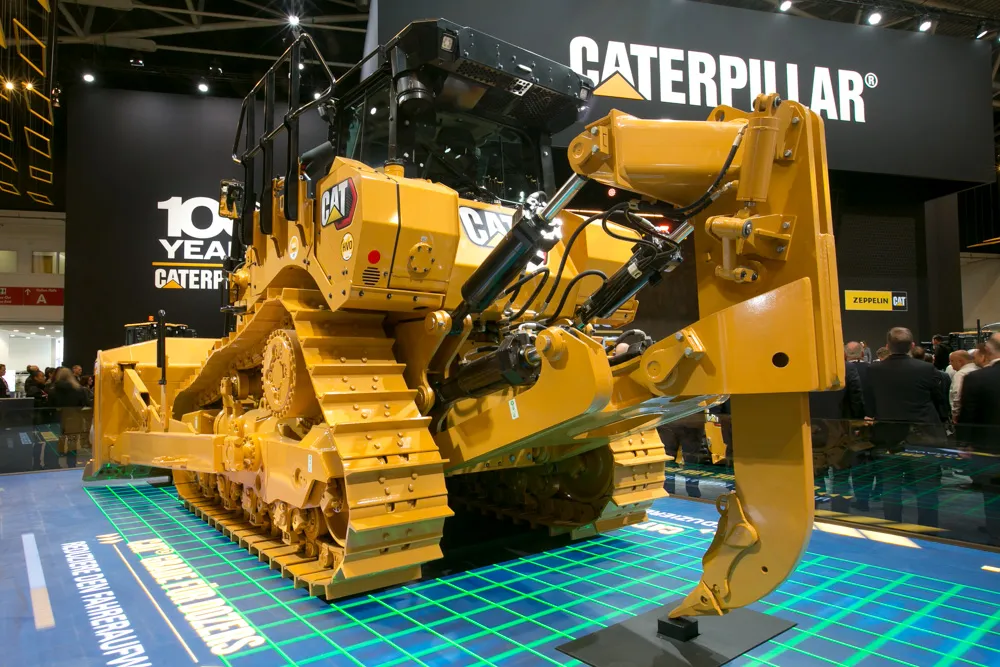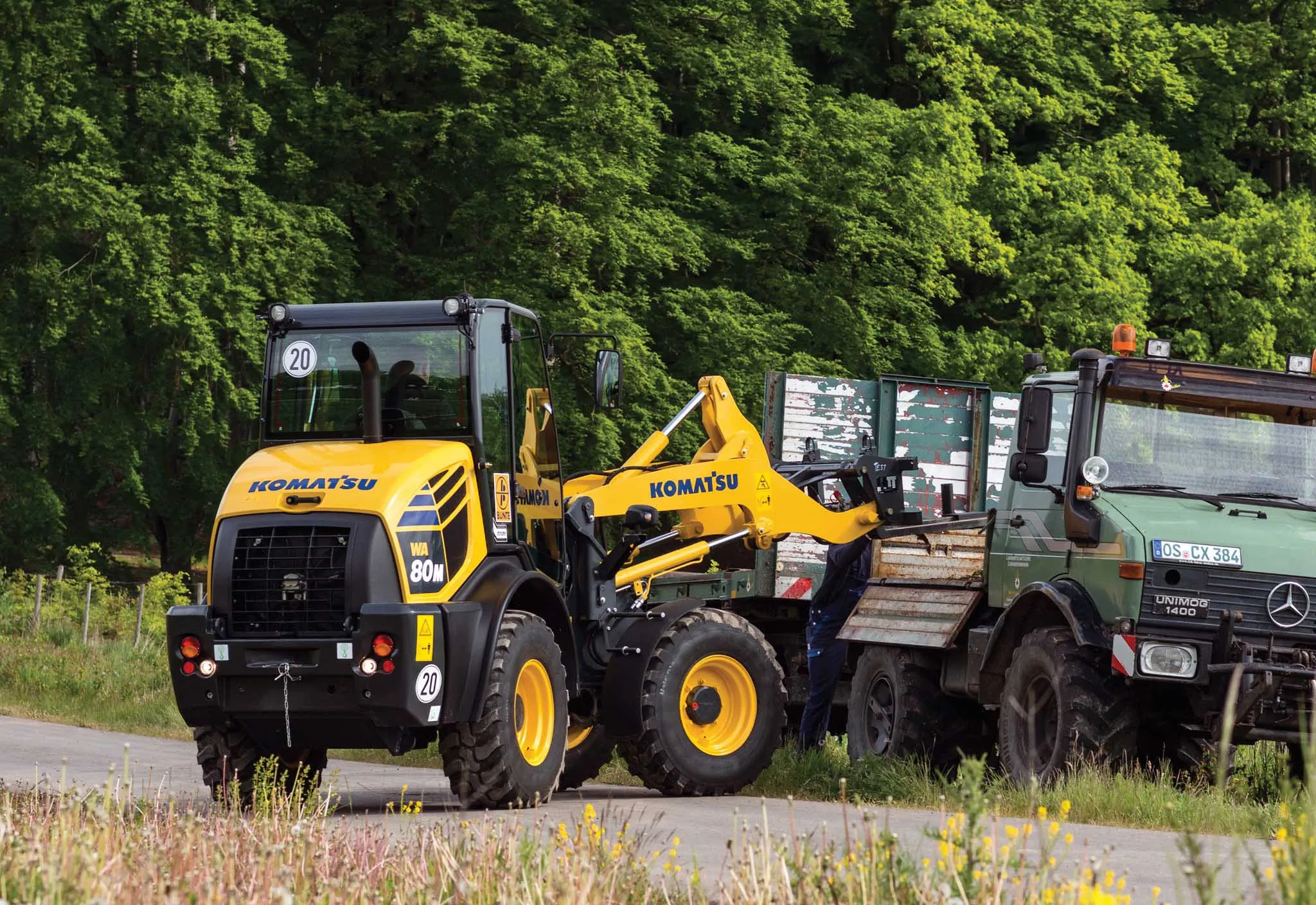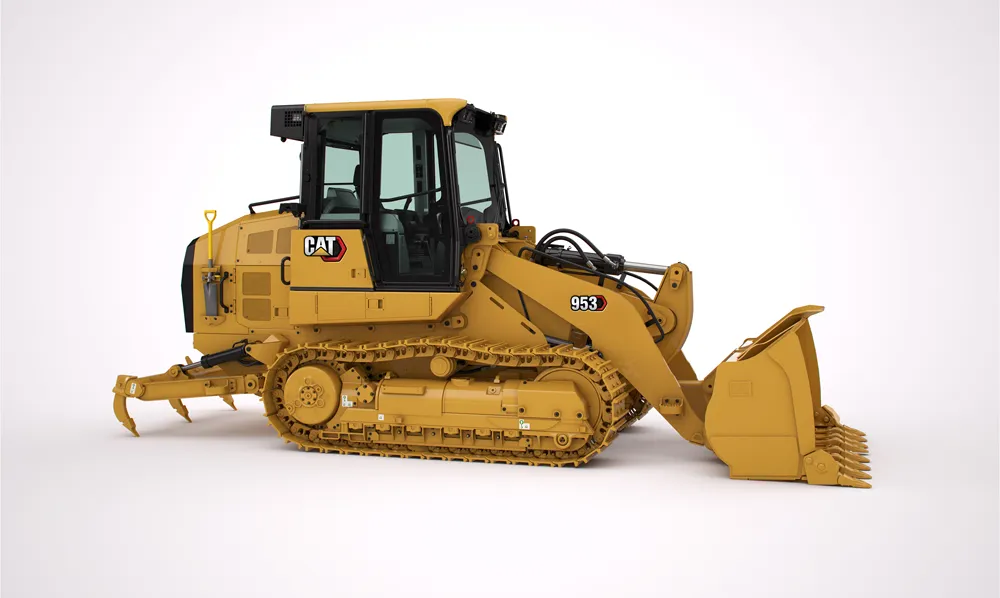
Caterpillar and Komatsu are introducing innovations and new models for the wheeled loader market.
From Caterpillar comes the availability of its sophisticated Cat Command for Loading system for the firm’s medium wheeled loaders. This advanced remote control package allows for the removal of the operator from the machine, meaning that the equipment can be used in extreme environments without risk to personnel.
The system allows semiautonomous remote control of the company’s next generation, mid-size loaders, although not on the GC variants. Cat Command for Loading can now be used with the Cat 950, 962, 966, 966 XE, 972, 972 XE, 980, 980 XE, 982, and 982 XE next-generation wheeled loaders.
The firm says that its Command system suits use in difficult operating environments such as demolition. The package is available in both line-of-sight and non-line-of-sight configurations.
Allowing the user to control the machine from a safe location, Command maintains high machine productivity in operating environments. The package is fully integrated with the loader’s electronic and hydraulic systems for quick response and smooth control.
Highly versatile, the control system allows easy switching between remote and manual in-cab operation. The hardware comes complete in a dealer-installed package that includes a low-profile design on the roof of the loader, requiring no welding or wire splicing for ease of fitting.
The ergonomic console features basic machine controls such as wheeled loader startup/shutdown, bucket rack/dump and lift/lower are easily accessed through the ergonomic console control layout. Operator inputs are sent directly to the machine’s electronics from the console. Integrated safety features can stop all wheel loader movements when the A-stop or remote shutdown switch is pressed, wireless communication is lost, a severe fault is detected, or the console is tilted more than 45˚ from normal operating position.
For non-line of sight operation, the Command for Loading station connects to multiple machines at the same job site or different sites. The user can operate one machine at a time either onsite or from miles away. It is compatible with other Command offerings for Cat equipment, including excavators and dozers.
Komatsu meanwhile is introducing the WA475-11 and WA485-11 wheeled loaders to its mid-sized range and the new WA700-8 to its array of large models.
The WA475-11 and WA485-11 models benefit from advanced technology and offer high performance, efficiency, and operator comfort. The newly developed Komatsu diesel engine delivers high torque in the low speed range. This is combined with a Komatsu-designed hydro-mechanical-transmission (HMT), delivering high performance, fuel efficiency and ease of operation for all transport and loading tasks.
The WA475-11 offers a 14% improvement in fuel efficiency over the Dash 10 predecessor, while the WA485-11 delivers a 29% gain in fuel efficiency compared to the earlier WA480-8.
The constant variable gear ratio ensures that the engine works efficiently. Variable speed control allows the operator to adapt maximum speed to the requirements of the jobsite, while limiting wheel spin in difficult conditions.
Compared to its predecessor WA480-8, the WA485-11 has offers a gain in payload and bucket capacity. All machine components have been adapted to a permanent payload of 8.8tonnes and can be increased to 9.3tonnes in an aggregate handling variant.
The new emissions control systems meets Tier 4 Final/Stage V standards, while the proven exhaust system includes a diesel particulate filter (KDPF). Together with the Selective Catalyst Reduction (SCR) system, this further reduces NOx emissions.
The new variable power control system enables the lifting speed to be controlled independently of the accelerator pedal, while the optimised Z-bar linkage offers up to 20% more lifting power and higher production.
The new cab offers better visibility and has an interior noise level of just 70 dB(A). The seat-mounted electronic pilot control levers have a new ergonomic design and improve operating comfort.
A digital driver information system provides important machine measurements, including KDPF status, AdBlue levels and fuel consumption. Messages from the ECO control system are displayed in real time during operation and on the exit screen when the ignition is turned off.
Another key innovation is the newly developed Angle-Feedback-Joystick-Steering (AFJS) without a steering wheel, which gives the driver feedback on the steering angle achieved at any time via the position of the steering lever.
The programmable engine management system automatically switches the engine off when idling. KOMTRAX telematics and the Komatsu Care customer maintenance program ensure effective fleet management and support, protecting the machine from misuse and maximising efficiency and uptime.
The new Komatsu WA700-8 wheeled loader optimises productivity and fuel efficiency for heavy-duty operations. Equipped with advanced engine technology and a redesigned Komatsu bucket, it benefits from increased lifting force and a large-capacity torque converter with standard lock-up for enhanced performance.
Weighing just over 97tonnes, the WA700-8 wheeled loader is powered by an emissions compliant engine rated at 570kW and has a bucket capacity of 9.2m³. The firm says that the machine benefits from a redesigned bucket that helps boost productivity and durability. The increased radius and floor inclination make the bucket easier to fill and helps material retention. The new spill guard design gives improved visibility to the pile, while sweeper wings on either side help to protect the front tyres.
The WA700-8 is equipped with Komatsu SmartLoader Logic, an engine control system ensuring the correct torque is delivered for each work phase. For example, torque needs are higher for digging in V-shape loading, but less when driving with an empty bucket. This system optimises torque for all applications and minimises fuel consumption. Komatsu SmartLoader Logic functions automatically without affecting operation, saving fuel while maintaining performance.









